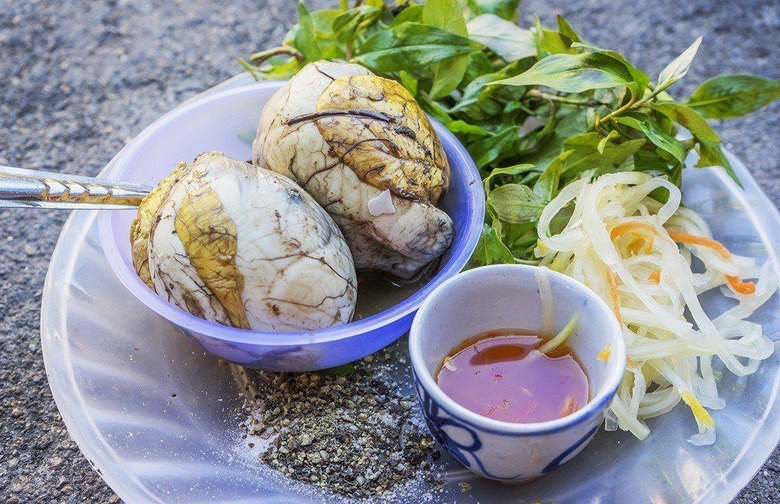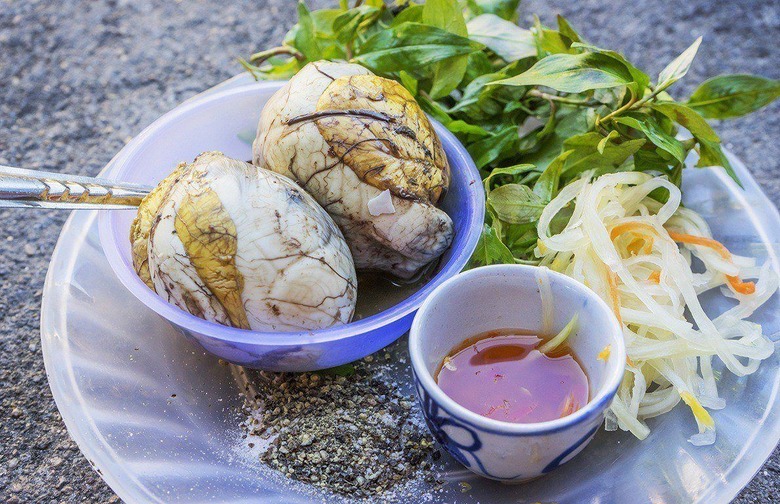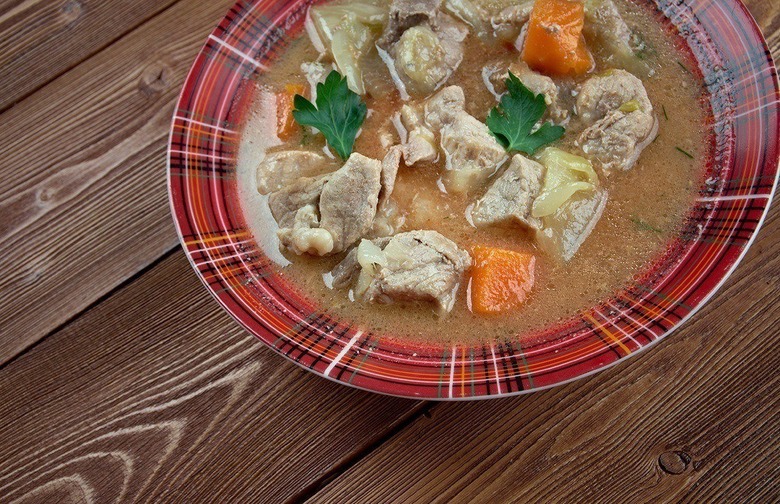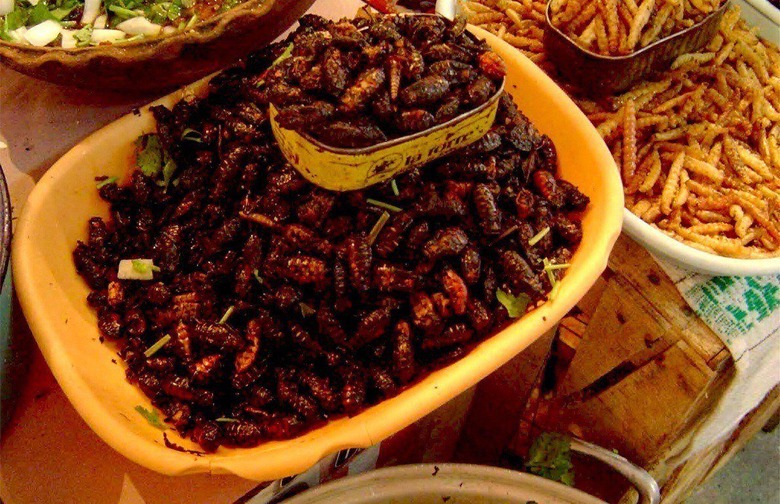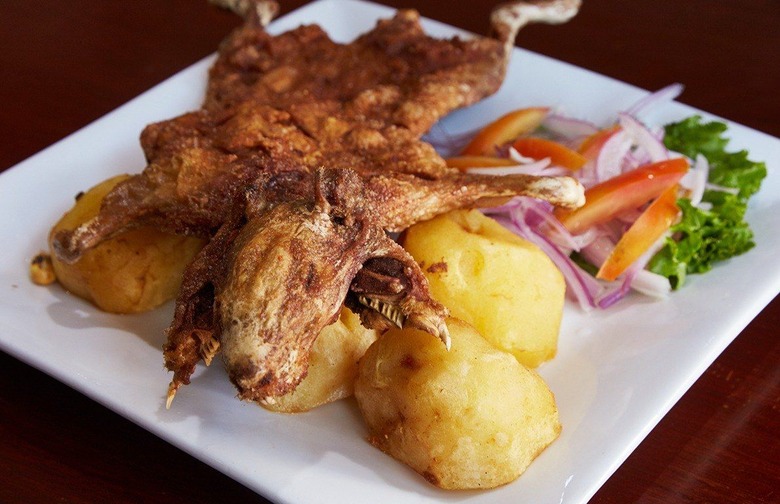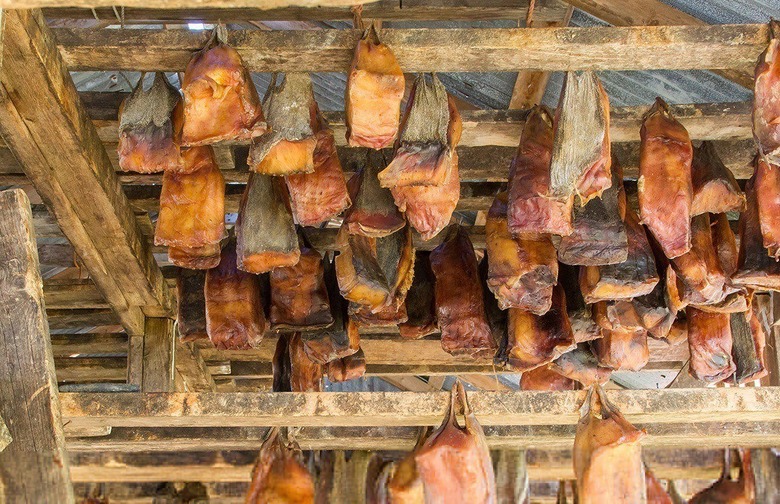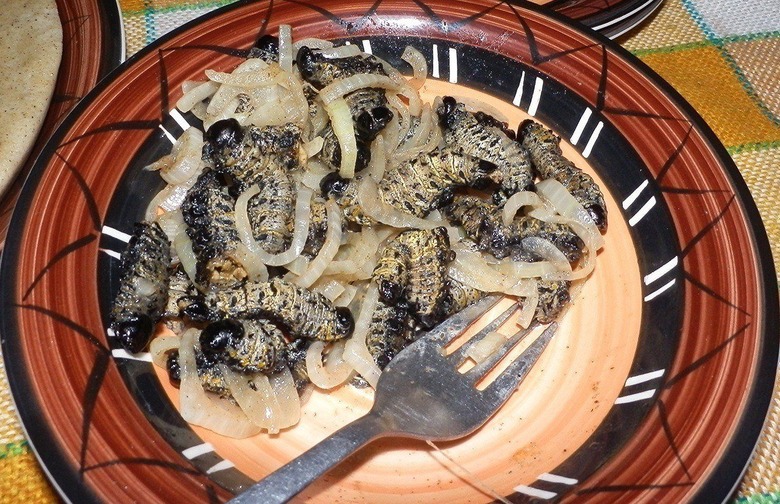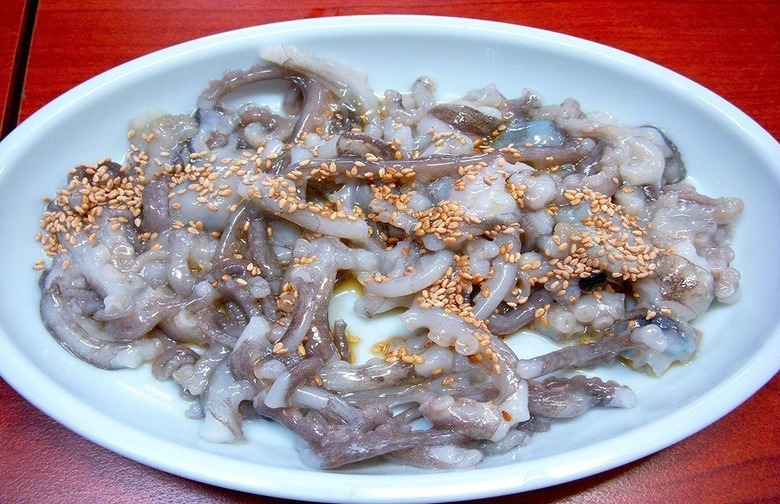Slideshow: Are You Brave Enough To Eat These 12 Popular Street Foods Around The World?
These days you can find nearly any specific cuisine being recreated elsewhere in the world, but there are still several you'll have to travel to find — or see to believe. Our adventurous side is always looking for something exciting to do or try, but is eating a 3-week old duck fetus (bones and all) pushing the envelope a bit too far? If your answer was no, then make your way to the Philippines for some freshly boiled balut. If balut doesn't sound like something you'd try, check out the other foods on this list you may (or may not) be brave enough to taste. Fried tarantulas, anyone?
1000-Year-Old Egg (China)
While the name is obviously hyperbole — other names include "100-year eggs" or "century eggs" — this egg's black and dark green appearance and gelatinous texture makes the name sound believable to newcomers. Eggs of chicken, duck, or quail are preserved and pickled for up to 100 days in clay, salt, and sometimes lime and ash. They are a popular delicacy in China.
Balut (Philippines and other Asian countries)
Balut are duck eggs with a twist: The fetus is allowed to grow for up to three weeks before being boiled alive and eaten in-shell. This popular Southeast Asian snack — in which one can often taste and feel the tiny bones and underdeveloped beaks and feathers — is considered an aphrodisiac.
Burgoo (Kentucky)
If you live in the continental United States, you won't have to travel far to try this spicy "exotic" stew. Authentic versions include squirrel and even possum and raccoon. Burgoo stew consists of vegetables and any combination of meats, though modern recipes are inclined to use familiar cooked meats such as pork and venison. The stew remains a longstanding staple in Kentucky's social circuit.
Chahuis (Mexico)
Since Mexico has the world's largest assortment of edible insect species, it's no surprise to find the edible beetle species chahuis (or xamoes) featured in market stalls in several Mexican states, seen primarily in rural areas. These beetles (also found in the United States) feed on mesquite trees. They are thoroughly toasted for consumption to better remove the more unpleasant tastes of their innards.
Cuy (Peru and other South American countries)
What's seen as a pet in American homes — the guinea pig — is a popular meal in Andean culture, and has been so for several millennia. Cuy (pronounced "kwee") are much larger than the guinea pigs seen in the United States and are often fried or baked whole. They were once the exclusive foodstuffs of the pre-Colombian upper class, but are now enjoyed — using one's hands — by all walks.
Fried Tarantulas (Cambodia and other Asian countries)
Though one can find fried tarantulas in Cambodia's major destinations and surrounding countries, the humble town of Skuon is the main hub of these critters, which can grow to the size of a human palm. Tarantulas are often bred in special underground burrows and later deep-fried with sugar and salt.
Fried Scorpion (Vietnam and other Asian countries)
Hákarl (Iceland)
This Icelandic national dish involves rotten and fermented shark meat (usually Greenland or sleeper shark) hung to dry for four to five months before consumption. The poisonous uric acid found in Greenland sharks is converted into ammonia during the fermentation process, which is made very apparent by its strong odor. Hákarl is often served in cubes on toothpicks and is widely available in markets throughout the country.
Mopani Worms (Zimbabwe and other southern African countries)
Mopani (also spelled "Mopane") worms are actually caterpillars of the emperor moth species, and are the grub of choice for many rural areas in southern Africa. The plump critters are excellent sources of protein, iron, and calcium, and are mainly eaten dry like potato chips or fried and added to tomato-based dishes and stews.
Pani Ca Meusa (Sicily)
San-nakji (Korea)
This dish is so raw and fresh that it's served to you alive. San-nakji is a Korean delicacy where the tentacles of a baby octopus are cut off and lightly seasoned with sesame oil and sesame seeds. But be careful, the tentacles are still squirming — and the suction cups can choke you by not allowing you to swallow it.
Stinky Tofu (Taiwan and Hong Kong)
This one isn't dangerous, but the potent smell of it tends to turn many people away. The dish is served as a plate of tofu that has been fermented in a brine made with various ingredients (like milk and vegetables, or meat, dried shrimp, and herbs), and is usually sold roadside or at night markets throughout Taiwan and in Hong Kong.
